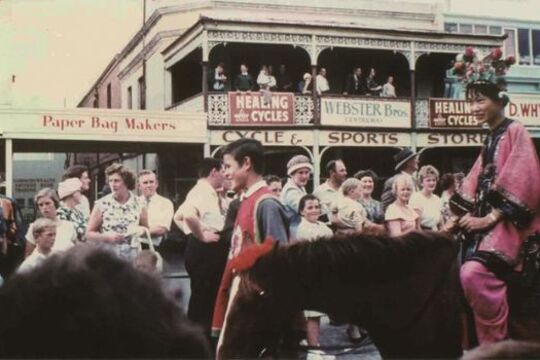Goldfields Stories: Dai gum san, big gold mountain
It may come as a surprise to some that the oldest Imperial Dragon in the world, Loong, is to be found in Bendigo, Victoria.
In 1851 gold was found in the Bendigo region. News reached China and by 1853 Chinese miners started to arrive at Dai Gum San (Big Gold Mountain). By 1855 there were up to 4000 Chinese in the Bendigo goldfields, about one fifth of the population.
By the 1860s, Bendigo was becoming a wealthy and established town, and in 1869 The Bendigo Easter Fair and Procession was initiated to raise funds for the Bendigo Benevolent Asylum and Hospital. By 1871, the Chinese, keen to support the wider community, joined the procession, providing music, theatre and acrobatic displays. Their position as the main attraction at the Fair was confirmed by 1879.
All of the costumes, flags and musical instruments were imported from China, with no expense spared. For the 1882 Fair, 100 cases of processional regalia were imported. In 1892 a further 200 cases arrived, along with Loong, the Imperial five-clawed dragon, who made his first appearance that year.
The traditions established in the 1860s by the Bendigo Chinese community continue to this day. As well as providing the main attraction in the Bendigo Easter Festival, ceremonies such as the Awakening of the Dragon are conducted. These traditions reflect uniquely preserved traditions, many of which were lost or discontinued in mainland China. They also reflect traditions, such as the main celebration taking place at Easter rather than Chinese New Year, that trace the history of the Chinese in Victoria.
The remarkable collection of 19th Century processional regalia that has been preserved by the Chinese community in Bendigo is held in the Golden Dragon Museum. It is not only a collection of world significance but, importantly, it contextualises and preserves the living heritage of both Victoria and China.




